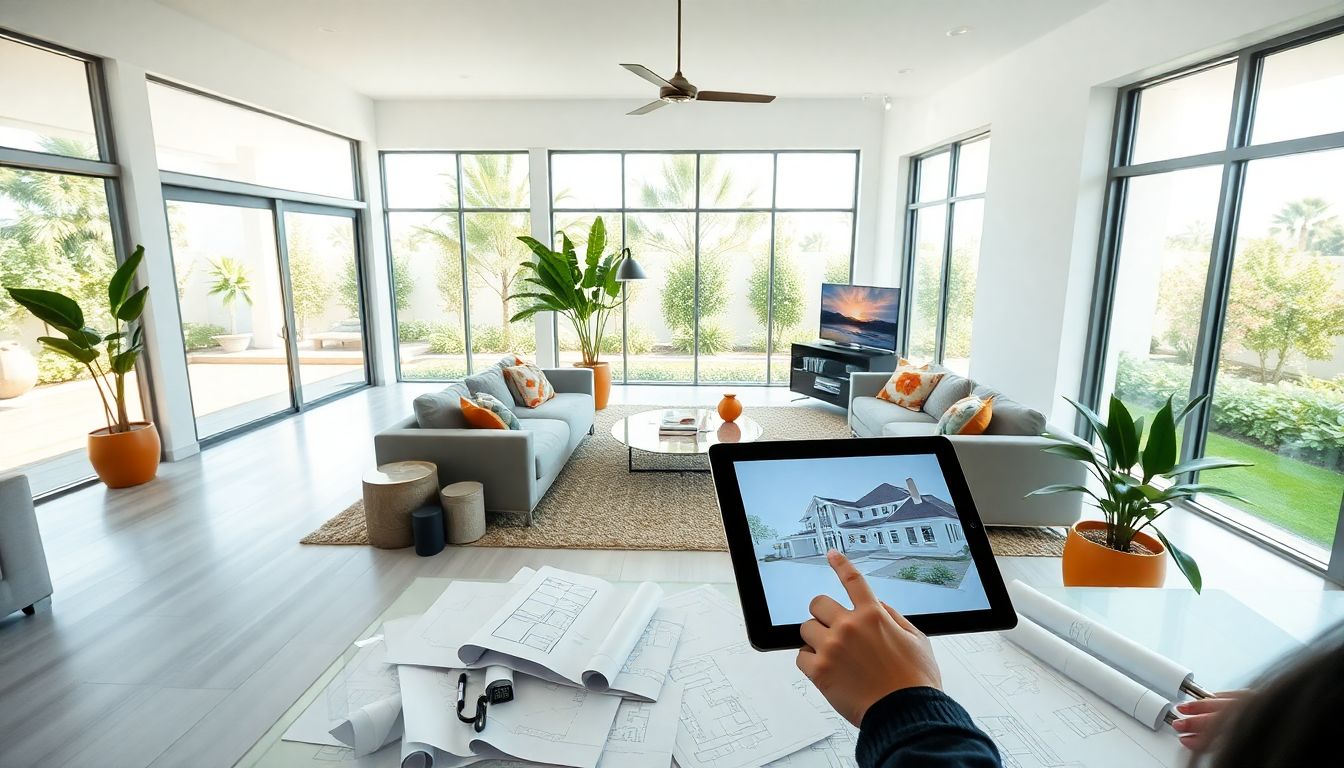Introduction
Having a new home constructed is exciting but confusing. Your home is a reflection of you and how you live. Good design makes your life easier and more enjoyable. With new designs popping up daily, no wonder you’re confused. The secret is to create a space that is lovely but functional for you. With the help of the professionals, you might be able to build a house that is indeed extraordinary and just perfect.
Learning About Your Vision and Lifestyle Requirements
Defining Your Design Requirements
Start with figuring out what kind of style you enjoy the most. Modern and sleek, or cozy, country? Function or form—most crucial? Having a mood board or drawing handy can aid in taking your concepts and converting them into an executable plan. It helps you see what’s and isn’t working before you make large decisions.
In Mind Lifestyle and Space Requirements
Second, consider how you live. Do you have a big family or a small one? Will lots of parties be being hosted? Understanding your routines helps in assisting to determine the design of your house. For example, a family of five would need an open space where all can access it. Preplanning activity spaces allows it to be easy to move from one room to another. This renders the area functional and not messy or disorganized.
Constructing an Honest Budget and Timeline
Planning ahead wards off stress and keeps things under control. Split the amount of money you will have to spend on every part of your home. Start with the essentials first. Having an architect or designer in-house will save you time and money. They stay on track with you and far from costly surprises.
Creating an Amazing and Aesthetic Interior Design
Choosing a Powerful Color Scheme
Colors can transform the mood of a room in an instant. Relaxing, calming mood? Pale blues or greens. Energy and excitement required? Bright yellows or reds may be the answer. Warm neutrals and pops of bold color are among the top trends for 2024, according to one design psychologist. “Colors influence how we feel, so pick wisely.”
Adding Statement Pieces and Art
It takes only one dramatic piece to create a strong statement. It may be a stylish sofa, an oversized piece of art, or a dramatic light. Statement furniture puts the eye on what you desire. Strong paint or paper on a highlight wall accomplishes the same thing. The idea is to have visual points of interest that direct the eye and lead to something.
Balancing Trends with Timeless Elements
Fashions can change, but every design is forever. Mix today pieces with forever pieces, like a forever rug and today furniture. Choose accessories that are easy to swap out, like pillows or artwork. It is best to maintain the basic furniture neutral and incorporate trendier pieces to bring in freshness. These are homes that possess transitional style that incorporates today and ever pieces.
Maximizing Space and Functionality
Maximizing Layout and Flow
An open floor plan is roomy and hospitable. But distinct spaces are okay, too—think about a cozy reading nook. Open flows make it easy to move around. Let the sun come in and make every room seem bigger. Think about scale when selecting furniture; too large can overpower, too small can vanish.
Using Multi-Purpose and Space-Saving Furniture
Small spaces require imaginative solutions. Fold-down beds, storage ottomans, and wall desks save space. Modular furniture allows you to redecorate as frequently as you like and makes your home flexible. As an example, a small flat with a Murphy bed and hidden storage is a cozy but functional room.
Making Smart Storage Solutions Work
Hidden storage and in-builts conceal clutter. Vertical storage can be used for books, plants, or accessories. Clutter-free living tricks the viewer’s eye into believing a clean and tidy look which brings them up short in the middle of their scroll. Professionals are overwhelmingly in agreement that proper storage delivers minimalist and contemporary aesthetics. Less is more, less being more dramatic flair.
Including Outdoor and Transitional Spaces
Creating Inviting Outdoor Spaces
Your outside area can be an extension of your inside area. Think warm patios or lush gardens. Strategically placed outdoor furniture and lighting design create lounging or entertaining spaces. A nicely designed garden with adequate seating becomes an extension of your living space in natural format. It’s really just a matter of getting the outside area to feel as styled as the inside area.
Seamless Indoor-Outdoor Transitions
Sliding glass doors and large windows blur the distinction between in and out. Roll together materials and hues to extend the continuity. Incorporating biophilic design elements—like greens—is intended to bring in nature to the indoors. This is for creating freshness, vibrancy, and a connection to nature.
Raising Curb Appeal
First impressions are everything. A home front communicates a lot about style and personality. Engage the public with creative textures, dramatic plants, and bright light. An added bit of detail—like house numbers done in a personal flair or a cozy front porch—is welcoming. Curb appeal projections serve to increase the worth of and appearance of your home.
Conclusion
Constructing a new home is planning-intensive but immensely rewarding. Start by defining your style and lifestyle needs. Blend bright colors with timeless pieces so that your bedroom can be modern but timeless. Employ smart floor plan and furniture choice to ensure each square inch works. Don’t forget about outdoor spaces—those are your overall appearance too. Take these tips and you can construct a home that attracts the eye and invites you in.
Do it step by step—map out a plan, put your thoughts on paper, and put them in order. Your dream home is closer than you think when you take deliberate, positive action. Build a home that is not only breathtaking but yours, a breathtaking home that you will love to possess.
